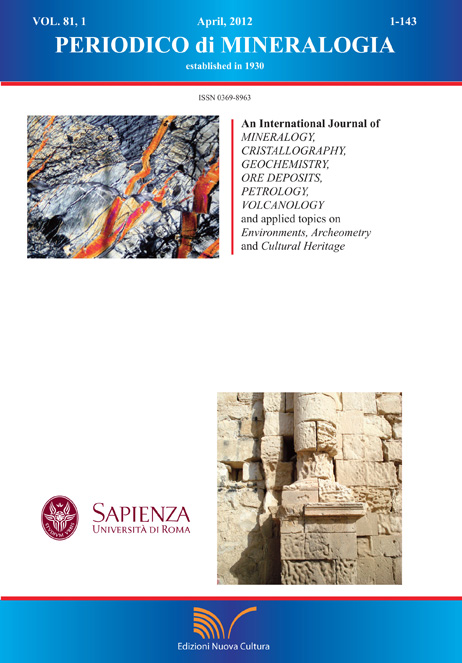Physical and chemical properties of some italian opals
DOI:
https://doi.org/10.2451/2012PM0006Keywords:
Italian opals, hyalite, IR spectroscopy, trace elements, XRPDAbstract
The physical and compositional properties of some opals from different parts of Italy have been investigated through several methodologies like optical analysis, specific gravity, refractive indices, xrpd, ir spectroscopy, la-icp-ms. The opals show different colors: white, white brownish, white yellowish, white yellowish greenish and greyish. Black and metallic inclusions, consisting of todorokite, are sometimes present. Play of color have not been observed but some opals show small iridescence zones; opals are inactive to the long and short wavelength uv radiation (366 - 254 nm) with the exception of one sample and also phosphorescence is absent. Refractive index and specific gravity values are n = 1.43 - 1.44 and G = 2.07 - 2.33 g/cm3 in agreement with literature.
xrpd analyses highlighted Italian opals are A, CT and C types, but most of them can be classified as CT opals. IR spectroscopy data confirmed the opal classification.
The most abundant elements are Mg (between 400 and 900 ppm), Fe (35-400 ppm), Ca (70-96 ppm) and Ni (20-70 ppm). Similarly to what observed in other opals worldwide, Fe appears to be the principal factor that determines the white brownish color and of the yellowish shade. Chromophore elements like V, Cr, Cu, Ti, Co and Ni are present in very low contents and do not influence the physical properties of the Italian opals. Mn is clearly detected (42 ppm) only in the sample n. 2 and is related to the presence of dendrites. Ca and Mg (non chromophore elements) are probably related to the matrix. On the whole the investigated Italian opals show a rather homogeneous trace element composition that appear well differentiated from that of other opals worldwide.


